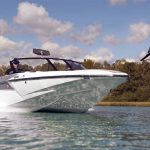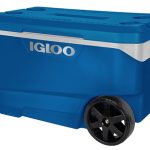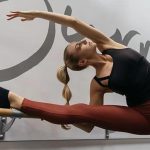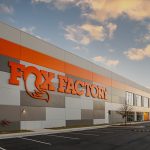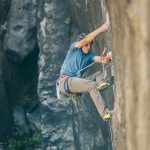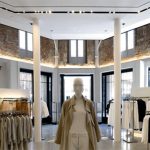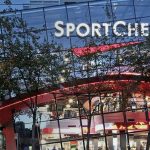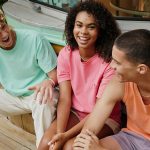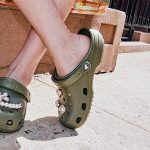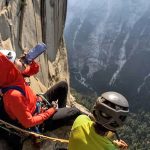Acquisitions played less of a role in the sales and earnings growth in the second quarter as a number of Sporting Goods companies focus on integrating their acquisitions to position themselves for improved operating upside down the road. There is also some indication that deals are starting to get a little expensive for the public guys as we see the private equity firms drive up valuations over the last twelve months.
Companies in the Softgoods sector, which includes Footwear and Apparel, saw profit growth slow to a rate more in line with sales growth after a year of quarterly bottom line results that easily outpaced the sales growth. On the surface, the Hardgoods sector looked like a losing proposition on the profit line as overall profits for the sector declined for the period, but a quick review finds the ICON Health & Fitness results dragging down the entire sector. Excluding the ICON results, Hardgoods profit growth outpaced sales growth by nearly a four-to-one margin.
Sports Executive Weekly presents an overview of second quarter vendor results in the chart on page three. Results are posted for those companies that have reported results for the period ended closest to the end of June.
Total sales increased 11.6% in the first quarter for those companies tracked in this report, while net income rose 11.3% for the period. Because the report is not a clear picture of the entire industry, SEW feels the total numbers are less significant than the trending information provided in the percentage increases and decreases. Return on Sales, which is the measure of net income as a percentage of sales, was flat for the quarter versus the year-ago period, coming in at a solid 7.3% of sales for the period. The number is skewed a bit by the companies whose profit is represented by operating income or EBIT, rather than net income. It is best to use the ROS measure to look at the performance of a particular company versus its results in the year-ago period, or to assess companies that report on a like-for-like basis. For the first quarter, the gross margin for the reporting companies averaged 45.2% of sales for the quarter, up 70 basis points from the year-ago period, about the same improvement over the first quarter. There was good GM improvement in both Softgoods and Hardgoods for the period.
The Softgoods sector saw about 340 basis points of growth coming from acquisitions. The sector had organic sales growth of 8.4% in the second quarter, with Reebok, Rocky, Russell Corp., Warnaco Swim, and VF Outdoor all getting gains from deals over the last year. Under Armour, which filed papers last month to enter the public market, makes its debut on the quarterly report as the top performer in organic growth in the Softgoods sector, with sales jumping 58.6% in the period. Volcom, which went public in July, was the other top performer in the sales line, posting 48.1% organic growth for the period.
The biggest losers for the period included Cutter & Buck (-9.0%), Delta Apparel (-9.0%), and Saucony (-8.8%). Saucony may have seen its best days behind it this year as the company works to complete its acquisition by Stride Rite Corp. Delta saw its third straight quarter of declining sales and now margins and profits are on the downside as well. Cutter & Buck is blaming a weak product line for a disappointing quarter and sees better results a good six months out.
Softgoods sector gross margins continued their upward trend, but improvement slowed here as well, expanding 75 basis points versus the year-ago period after posting a 225 basis point last quarter. Deep GM declines at Ashworth, Columbia, Deckers, Everlast, Phoenix, and Warnacos Swimwear division partially offset big gains at LaCrosse, Rocky (thanks to the acquisition of EJ Footwear), Under Armour, and Volcom.
Sports Executive Weekly is still approaching the Hardgoods sector a bit differently for the quarter, opting to exclude the marine division of Brunswick from the report due in large part to SEWs constituency, which, for the most part, is not in the boat business. The other factor that weighed in the decision was the ability for those businesses to skew the numbers a great deal, while having little impact on the retailers covered.
Organic sales in the Hardgoods sector were up 8.9% for the period, the strongest gain SEW has reported in the sector over the last two years, thanks in large part to a resurgent Golf segment business and continued health in the Fitness segment. Adlila (+53%) may signal further potential gains in the Golf business. Nautilus and Precor both posted strong double-digit gains in the Fitness segment, but the overall segment was held back by the declines at ICON Health & Fitness. Orange 21 (-26.6%) was the biggest decliner in Hardgoods, followed closely by Johnson Outdoors (-23.8%). Suunto also turned in a double-digit decline when measured in the companys reporting Euro currency.
The bigger impact from ICON was in the bottom line of the Hardgoods sector, which declined 1.7% for the period. Excluding ICON, the Hardgoods profit line surged more than 41% for the period, while sales rose roughly 12% for the quarter. Return-on-Sales, excluding the ICON impact, was a respectable 6.6% of sales for the period, a 130 basis point improvement from last year.
Margins continue to suffer across the board in the Hardgoods sector, with the Riddell Bell Holdings business leading the decliners, thanks to more business coming out of the low margin end of the acquired Bell Sports business. On an pro forma apples-to-apples basis, the RBH business saw sales grow 15.7% for the period and profits increased nearly 129% versus Q2 last year.
While the overall pace of growth in profits for the vendor business has slowed, it is now a much more balanced growth across the various categories. The growth in the bottom line also easily outpaces the growth in the retail sector, where organic sales growth holds steady with the vendor side, but profit growth falls far short. Look for next weeks Sports Executive Weekly for a full recap of the second quarter retail business.


